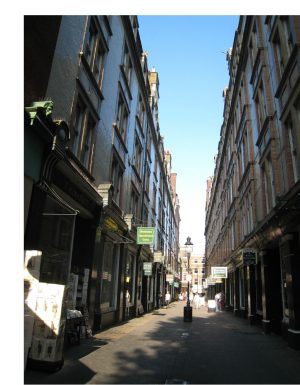 Harry Potter’s London
Harry Potter’s London
Spheres – national spiritual magazine
London Calling – by Owl! Serene Conneeley takes a tour with JK Rowling and Harry Potter.
They say that to make money you should follow your heart and your passion, and writer Joanne “JK” Rowling is the perfect example of this wisdom. In crafting her magical series of books about the boy wizard Harry Potter and his friends, she inspired a generation of children to start reading, captured the imagination of real-life witches of all ages, and became the most successful author of all time.
But it didn’t come easily. While writing the first book she was a young single mum struggling to survive on welfare, and battled crippling doubt over whether she should give up and get a “real job” for her daughter’s sake or continue with the inspiration that had gripped her in 1990, when her train to London was delayed and the idea for Harry Potter came to her fully formed.
“I can’t describe the excitement to someone who doesn’t write books, except to say it was that incredibly elated feeling you get when you’ve just met someone with whom you might eventually fall in love,” Joanne says. “That kind of elation, that light headedness and excitement. So I got back to my flat in London and started writing, and kept writing for 15 years.”
When, after several years, she finished the first book, she faced an avalanche of rejections that would make most people give up, but Joanne stuck to her guns, determined to see her dream realised. Finally a publisher gave her a chance, but she was paid a measly advance of 2500 pounds and told to get a day job, because no one believed she would ever make a living as a writer or that her story would be a success.
Harry Potter and the Philosopher’s Stone, the first book, was published in July 1997, and they printed just a thousand copies. A decade later, in July 2007, Harry Potter and the Deathly Hallows, the seventh and final adventure, became the fastest-selling book of all time, with more than 11 million copies sold in the first 24 hours.
Today Joanne has sold more than 400 million books, launched one of the most successful film franchises of all time – with the new one, Harry Potter and the Half-Blood Prince, just released – been awarded an OBE, and become one of the few billionaire authors in the world. Some reports claim her fortune increases by $200 a minute, but whatever the figures, her hard-earned wealth has allowed her to contribute substantially to the charities closest to her heart, and proves that sticking to your guns and following your dreams can definitely pay off.
While Joanne created an enchanted world inhabited by moving staircases, goblin banks and flying cars, she followed the most common piece of advice for authors – she wrote about what she knew. The world Harry Potter inhabits may be magical, but it’s based on real places that are dear to her heart, from the villages of her childhood to the city haunts she loved when she lived in London and the wild Scottish castles and highlands she fell in love with when she moved to Edinburgh in the mid-90s.
Joanne was born in the Cotswolds village of Yate near Bristol, England – not far from Glastonbury – and spent her early childhood in the nearby village of Winterbourne. At the age of nine she and her family moved the short distance to Tutshill, a village in the Forest of Dean near Wales, which is where Harry, Ron and Hermione camp in the final book while searching for the sword of Gryffindor that Snape has hidden. She also used the names of villages in her area, such as Weasley and Dursley, for people in her books, and the descriptions of the places her magical families live in reflect the tiny towns where she grew up.
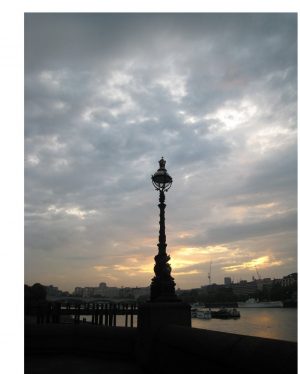 After university Joanne moved to London, where she lived in a flat in Clapham Junction – in the Borough of Wandsworth, cutely enough! – and worked for Amnesty International. Many of the streets, landmarks and buildings of this historic city ended up as locations in her books, and they’re easy, and fun, to visit. I did a Harry Potter walking tour to learn about some of them, and visited others on my own.
After university Joanne moved to London, where she lived in a flat in Clapham Junction – in the Borough of Wandsworth, cutely enough! – and worked for Amnesty International. Many of the streets, landmarks and buildings of this historic city ended up as locations in her books, and they’re easy, and fun, to visit. I did a Harry Potter walking tour to learn about some of them, and visited others on my own.
The River Thames snakes through London and is one of the most obvious locations – it’s the glittering body of water the Order of the Phoenix soar along on their broomsticks as they accompany Harry to 12 Grimmauld Place early in the fifth book. They fly past incredible landmarks like Tower Bridge, which was considered one of the engineering marvels of its time when it was constructed in 1894, and swoop under London, Southwark and Blackfriars Bridges, almost crashing into the Golden Salamander, a pleasure boat that’s still there, offering cruises up the Thames, which has also been used in the odd James Bond flick.
They also pass the stunning Houses of Parliament, situated on the north bank of the river. This iconic part of the city skyline is truly magical, especially as the sun sets and the street lights flicker on. The Houses of Parliament are also known as the Palace of Westminster, because a thousand years ago the compound was a royal residence. Today it’s made up of the House of Lords and the House of Commons, as well as several ornate towers.
The most famous of these is the 96 metre-high Clock Tower and its Great Clock of Westminster, better known as Big Ben, although this is actually the name of its main bell, not the tower. The most striking view of the Parliament buildings is from across the river as twilight descends. Walk across Westminster Bridge, which Harry and the gang flew under, and down the stairs opposite for the perfect photo opportunity, and be sure to check out the next bridge along, Lambeth, which is where the Knight Bus squeezed between the two muggle buses in Prisoner of Azkaban.
Across the road from the Houses of Parliament is Westminster Station, part of the underground train network known as the Tube. This is the stop Harry travels to with Mr Weasley on their way to the Ministry of Magic. To continue your tour you can catch the Tube from here to Temple Station – although if you go in, try not to get confused at the ticket barrier like Ron’s dad did! – or walk there along the river’s embankment, past the statue of Boadicca and Cleopatra’s Needle towards Blackfriars Bridge.
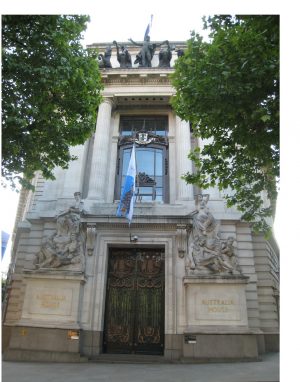 From Temple it’s just a short walk to Australia House, on the corner of Aldwych and The Strand. This is the location of the Australian High Commission in London, where the interior scenes in the wizard bank Gringotts were filmed. This was the first Harry Potter location I visited, and it was exciting to realise there’s an Aussie connection to the canon! Sadly Australia House isn’t open to the public – although if any of lose our passport we have to go there! – but you can peek inside to the amazingly sumptuous marble interior and chandeliers you’ll recognise from the movies. The vaults beneath the floor, where Harry’s money, the philosopher’s stone and all the wizarding world’s precious belongings are kept, were once used by the Commonwealth Bank to store money interchanged between the British and Australian governments. Construction on this gorgeous old building, set on a strange triangular piece of land, began a century ago, although it looks much older and more historic.
From Temple it’s just a short walk to Australia House, on the corner of Aldwych and The Strand. This is the location of the Australian High Commission in London, where the interior scenes in the wizard bank Gringotts were filmed. This was the first Harry Potter location I visited, and it was exciting to realise there’s an Aussie connection to the canon! Sadly Australia House isn’t open to the public – although if any of lose our passport we have to go there! – but you can peek inside to the amazingly sumptuous marble interior and chandeliers you’ll recognise from the movies. The vaults beneath the floor, where Harry’s money, the philosopher’s stone and all the wizarding world’s precious belongings are kept, were once used by the Commonwealth Bank to store money interchanged between the British and Australian governments. Construction on this gorgeous old building, set on a strange triangular piece of land, began a century ago, although it looks much older and more historic.
A little further down the road is the Lyceum Theatre, just off The Strand on Wellington Street It’s in the heart of the West End theatre district, right by Covent Garden, Drury Lane and other famous names. This also has links to Harry Potter, as it was the place where the legend of the vampire – which appears in the books – was truly born. For 20 years in the late 19th century, Bram Stoker worked there as the business manager and personal assistant of London’s most famous actor, Henry Irving, who was the inspiration for the vampiric count in his classic novel Dracula. Bram wrote the book while he was at the Lyceum, and a memorial on the back wall of the theatre commemorates his influence.
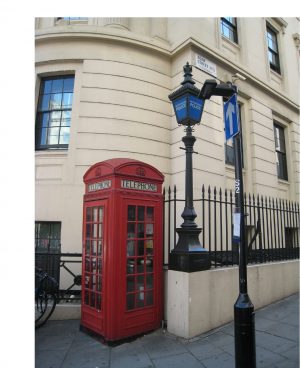 Continuing along The Strand you come to Charing Cross police station, on the corner of Agar Street opposite Zimbabwe House, which was Joanne’s inspiration for the Ministry of Magic. There’s even the red phone box on the corner – the visitors entrance – which is a popular place for photos and, on the walking tour, magic tricks. In the movie however they used the nearby junction of Scotland Place and Great Scotland Yard to shoot the scene where Harry and Mr Weasley enter the Ministry, some of the real places not being particularly conducive to filming (such as a real-life police station!).
Continuing along The Strand you come to Charing Cross police station, on the corner of Agar Street opposite Zimbabwe House, which was Joanne’s inspiration for the Ministry of Magic. There’s even the red phone box on the corner – the visitors entrance – which is a popular place for photos and, on the walking tour, magic tricks. In the movie however they used the nearby junction of Scotland Place and Great Scotland Yard to shoot the scene where Harry and Mr Weasley enter the Ministry, some of the real places not being particularly conducive to filming (such as a real-life police station!).
On the other side of The Strand is the famous, and luxuriously fancy, Savoy Hotel, where the story of the Invisibility Cloak was sown in the 1930s. Writer Dylan Thomas used to drink in the bar downstairs, and told friends about a strange encounter he had there with magician Aleister Crowley. The influential occultist was shocked when Dylan addressed him one night, as he claimed to be wearing his invisibility cloak, and decided that the poet must also have magical powers. When Dylan asked him what he meant, Aleister said no one ever addressed him when he was wearing the cloak because it made him invisible. According to Dylan however, it wasn’t a cloak of any kind that made this happen – people avoided making eye contact with Aleister because he was so scary!
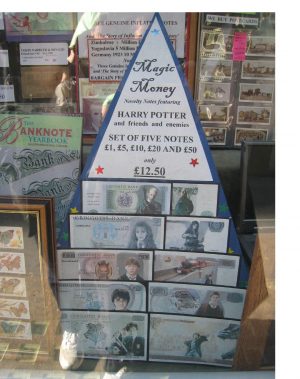 From The Strand it’s just a short walk through a maze of tiny alleyways to one of the most magical parts of London. Cecil Court, just off Charing Cross Road, was the inspiration for Diagon Alley, “London’s finest source for a wizard’s every need.” Entering this narrow laneway is like being transported back to the 18th century, with gas-style lamps providing the lighting, mystical carved figures peering down at passersby, and old-fashioned hand-painted signs creaking eerily above the shops. The wares on offer are also straight from Harry Potter’s world, with stores like The Witch Ball, Unsworth’s and Tindley & Chapman stocking old and rare books, esoteric tomes and antiquarian maps, as well as stamps, theatre memorabilia and special magic money emblazoned with Harry and Co’s faces. Watkins Books, at number 19, claims to be the oldest occult and mystical bookshop in the world.
From The Strand it’s just a short walk through a maze of tiny alleyways to one of the most magical parts of London. Cecil Court, just off Charing Cross Road, was the inspiration for Diagon Alley, “London’s finest source for a wizard’s every need.” Entering this narrow laneway is like being transported back to the 18th century, with gas-style lamps providing the lighting, mystical carved figures peering down at passersby, and old-fashioned hand-painted signs creaking eerily above the shops. The wares on offer are also straight from Harry Potter’s world, with stores like The Witch Ball, Unsworth’s and Tindley & Chapman stocking old and rare books, esoteric tomes and antiquarian maps, as well as stamps, theatre memorabilia and special magic money emblazoned with Harry and Co’s faces. Watkins Books, at number 19, claims to be the oldest occult and mystical bookshop in the world.
There are even stories of a ghost, harking back to a murder in the antique shop at number 23 half a century ago, when sales assistant Elsie May Batten was murdered with a dagger (or an athame?). Cecil Court, a picturesque pedestrianised thoroughfare, runs between Charing Cross Road and St Martin’s Lane, and is located close to both Leicester Square and Charing Cross Tube stations, so it’s easy to get to from anywhere in London.
 Keeping to the magical theme, just across from Charing Cross Station is Davenports Magic Shop, acclaimed as the oldest family-run magic business in the world, and today one of London’s finest sources for a wizard’s every need. While they stock lots of sleight of hand trickery, there are also old books, tarot cards and real magical supplies, so it’s a Diagon Alley for the modern witch. This whole area is magical, with crooked alleys, antique shops, dusty parchments in storefronts, gargoyles as doorknockers, strange stone beasts glaring down from roofs, as well as plenty of old pubs and inns to have inspired the Leaky Cauldron.
Keeping to the magical theme, just across from Charing Cross Station is Davenports Magic Shop, acclaimed as the oldest family-run magic business in the world, and today one of London’s finest sources for a wizard’s every need. While they stock lots of sleight of hand trickery, there are also old books, tarot cards and real magical supplies, so it’s a Diagon Alley for the modern witch. This whole area is magical, with crooked alleys, antique shops, dusty parchments in storefronts, gargoyles as doorknockers, strange stone beasts glaring down from roofs, as well as plenty of old pubs and inns to have inspired the Leaky Cauldron.
Another dimension to Diagon Alley is further east along the Thames, towards the spooky Tower of London. In the first movie, they used Leadenhall Market, a beautiful covered marketplace with cobbled floors that dates back to the fourteenth century, as the area around the wizarding centre. This ornate Victorian-style market is full of vendors selling flowers and various fresh foods, and has been a centre of commerce since Roman times.
Walking around London is like walking across a Monopoly board, and Kings Cross Station is another place that’s worth a visit. In Harry’s world, it’s the location of Platform 9 3/4, the secret platform the Hogwarts Express departs from. “For me, Kings Cross is a very, very romantic place, purely because my parents met there,” Joanne reveals. “They met on the train pulling out of Kings Cross, so I wanted Harry to go to Hogwarts by train, and obviously therefore it had to be Kings Cross.” She has since admitted that when she was writing the description of the station in the book, she was picturing the layout of nearby Euston Station, so the platform directions don’t match Kings Cross exactly.
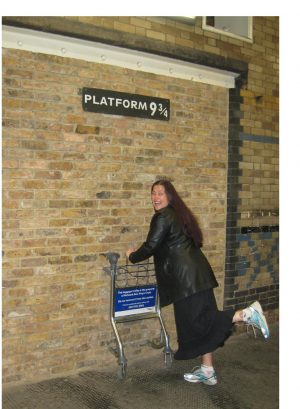 But rail workers have created the cutest thing ever for the hundreds of fans who traipse there every day in search of the place the young wizards set off from. Between Platforms 9 and 10, and freely accessible without having to buy a ticket, is a cast-iron sign saying Platform 9 3/4, with a luggage trolley protruding from the brick wall, as though it was caught while a Hogwarts student was halfway through. It’s the perfect place for a Harry Potter photo, and the staff are very friendly too. I felt a little silly as I wandered around trying to find it, but when I finally asked someone, he just smiled and pointed me in the right direction, used to fans trying to recapture the magic of the books.
But rail workers have created the cutest thing ever for the hundreds of fans who traipse there every day in search of the place the young wizards set off from. Between Platforms 9 and 10, and freely accessible without having to buy a ticket, is a cast-iron sign saying Platform 9 3/4, with a luggage trolley protruding from the brick wall, as though it was caught while a Hogwarts student was halfway through. It’s the perfect place for a Harry Potter photo, and the staff are very friendly too. I felt a little silly as I wandered around trying to find it, but when I finally asked someone, he just smiled and pointed me in the right direction, used to fans trying to recapture the magic of the books.
In the movies they shot the Hogwarts Express scenes inside Kings Cross Station, but they used Platforms 4 and 5, renumbered to match the book, as they fit the description better. And for the exterior scenes, like the one in The Chamber of Secrets where Harry and Ron can’t get through to the platform and end up flying the Weasleys’s Ford Anglia car to school, they used the station across the road, St Pancras, as its grand old Gothic style is so much more impressive than the real thing. At the moment though this station is undergoing major refurbishment, so you can’t see much of the old building’s beautiful façade under the scaffolding.
Not far from Euston Station and Kings Cross is London Zoo, the world’s oldest scientific zoo, where Harry accidentally sets the Burmese Python free from the Reptile House in the first book, trapping Dudley behind the glass. There’s a plaque next to the snake’s enclosure that commemorates the filming. London Zoo is located in beautiful Regent’s Park, one of the many expanses of grassland in the city, complete with large lake, playing fields and canal.
With or without the magic of Harry Potter, London is a beautiful city, full of history and charm, and names that are so much a part of our consciousness through books, movies, nursery rhymes and real-life events. And with Harry Potter and his world added, it becomes one of the most enchanting cities ever.
Serene Conneeley is an Australian writer and healer with a fascination for history, travel, ritual and the myth and magic of ancient places and cultures. She is the author of Seven Sacred Sites: Magical Journeys That Will Change Your Life. Part history, part travel guide, part spiritual search, it will take you around the world, and deep within your own soul. Her new book is A Magical Journey: Your Diary of Inspiration, Adventure and Transformation.
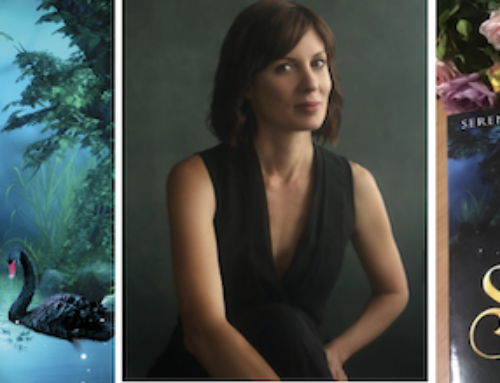
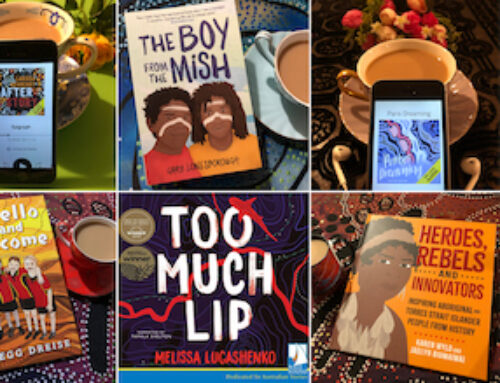
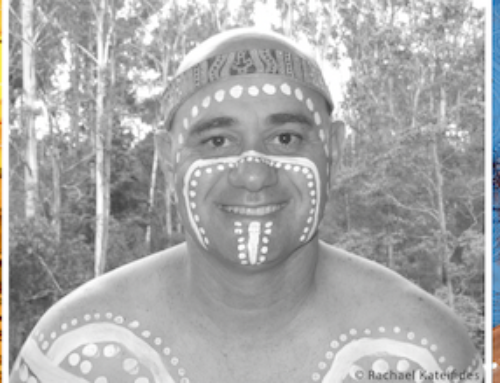
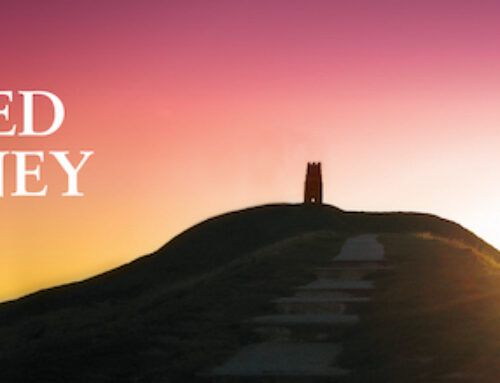
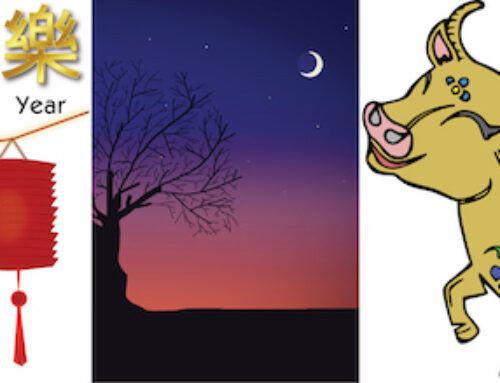


Get Social